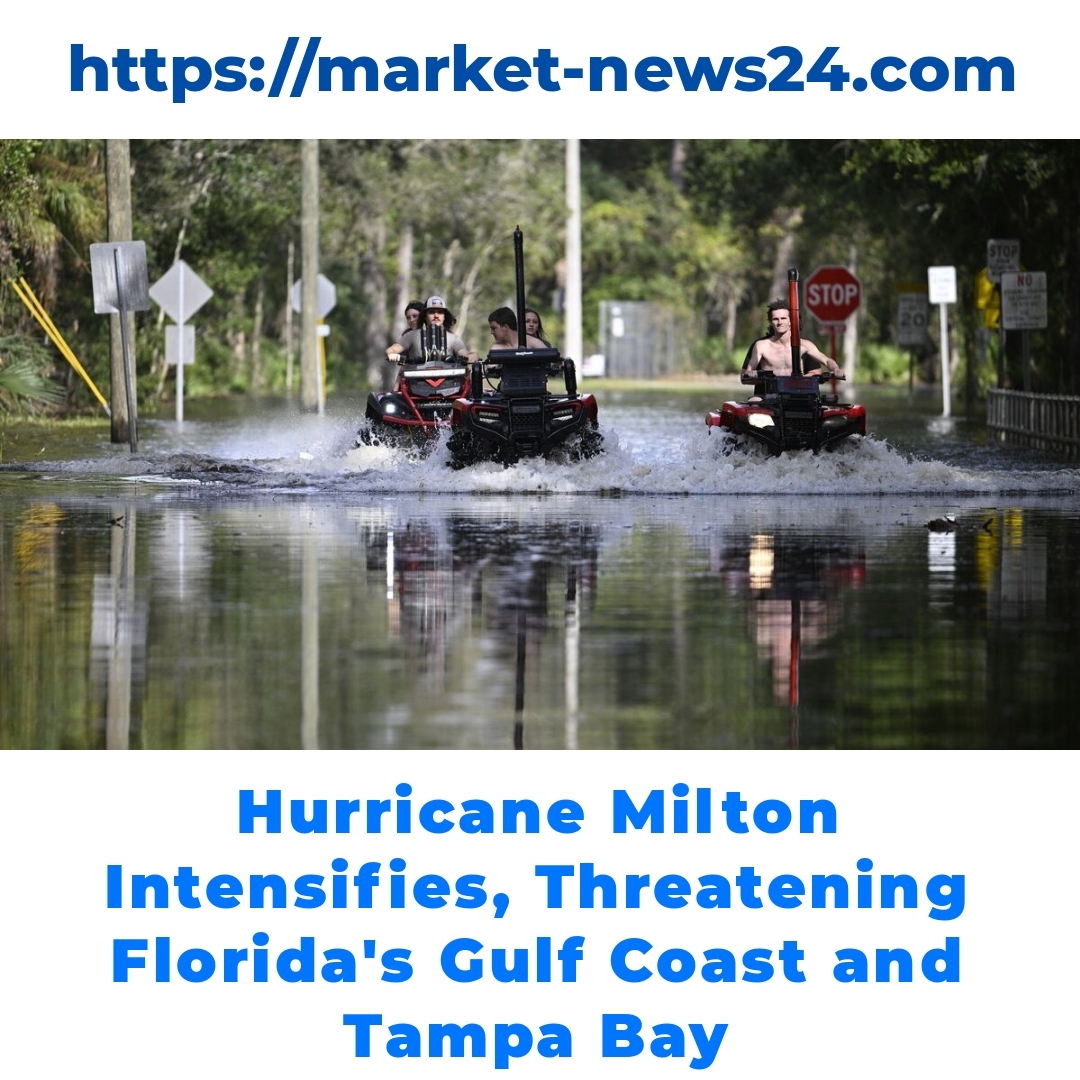Hurricane Milton is currently classified as a Category 1 hurricane and is rapidly approaching Florida’s Gulf Coast, posing a potential threat to communities such as Tampa Bay. Staying informed about its trajectory and potential impacts is crucial for residents in affected areas to ensure safety and preparedness.


Understanding Hurricane Milton
Hurricane Milton is currently classified as a Category 1 hurricane, which means it has wind speeds ranging from 74 to 95 miles per hour. While it isn’t the strongest category, it can still cause significant damage, especially when it makes landfall. Some characteristics of a Category 1 hurricane include strong winds, heavy rainfall, and the potential for storm surges, which can lead to flooding in coastal areas.
Meteorological factors are playing a role in Hurricane Milton’s strengthening. The warm waters of the Gulf of Mexico provide the necessary heat and moisture to fuel the storm. This means that as Milton moves closer to the coast, it could potentially gain strength and impact more areas along the way.
The Path Toward Florida’s Gulf Coast
Hurricane Milton’s path toward Florida’s Gulf Coast is being closely monitored by meteorologists. Its projected path indicates that it may have a direct impact on areas like Tampa Bay, which is a populated region and vital for local economies. Tracking the storm’s progress is essential for residents and businesses alike.
For real-time updates on Hurricane Milton’s path, you can rely on several reliable tools and resources, such as the National Hurricane Center, local news channels, and weather apps. Keeping an eye on the storm’s movements will help you stay informed and prepared.
Expected Impact on the Tampa Bay Area
As Hurricane Milton approaches the Tampa Bay area, residents should be prepared for some challenges. They can expect wind speeds that could reach up to 80 miles per hour, alongside heavy rainfall and possible storm surges.
So, how Hurricane Milton will affect the Tampa Bay area? Flooding is a significant concern, especially in low-lying areas. Debris from high winds can also damage homes and local infrastructure. It’s vital for families to stay updated on meteorological reports to understand what to anticipate.
Hurricane Milton Tracking and Updates
Finding the latest information about Hurricane Milton is crucial. Reliable resources for tracking hurricanes include:
– The National Hurricane Center website
– Local television news stations
– Weather apps like The Weather Channel
Listening to these sources will help you stay ahead and make informed decisions on safety measures. The importance of staying updated cannot be overstated, as meteorological conditions can change rapidly.
Florida Hurricane Preparedness
Residents in the path of Hurricane Milton should take essential steps for their safety. Preparing for Category 1 hurricanes in Florida includes:
– **Creating Emergency Kits**: Stock up on necessary supplies like water, food, medications, and first aid items.
– **Evacuation Plans**: Identify safe locations to evacuate to if authorities issue a mandatory evacuation.
– **Home Protection**: Secure windows and doors to reduce damage from winds.
Having a plan in place will make a difference when it comes to ensuring safety during hurricane events.
Hurricane Season and Future Outlook
Florida’s hurricane season typically runs from June 1 to November 30. Despite Hurricane Milton being the focus right now, there is always the possibility of other storms developing in the weeks ahead. It’s crucial for residents to maintain constant vigilance and be prepared as we navigate through this season.
Staying aware of the forecasts and being ready for any changes can make a significant difference. The trend of increased storms highlights the need for ongoing preparations.
Conclusion
Hurricane Milton is set to impact Florida’s Gulf Coast, particularly the Tampa Bay area, and understanding its path and potential effects is vital. It’s essential for residents to prioritize hurricane preparedness and stay informed about the latest developments. Take action now to ensure safety for you and your loved ones.
Remember, being prepared can make all the difference when it comes to weathering the storm. Stay safe and stay informed.
Additional Resources
For tracking Hurricane Milton and staying up to date with other hurricanes, utilize the following resources:
– National Hurricane Center: [link]
– Local emergency management services in Tampa Bay: [link]
Contact your local authorities for emergency management assistance and stay prepared. Stay safe!
FAQ for Hurricane Milton
What category is Hurricane Milton?
Hurricane Milton is currently classified as a Category 1 hurricane, with wind speeds ranging from 74 to 95 miles per hour.
What areas are expected to be impacted?
The primary area of concern is the Tampa Bay region, where residents may face strong winds, heavy rainfall, and possible storm surges.
How can I track Hurricane Milton?
You can track Hurricane Milton using the following resources:
- The National Hurricane Center website
- Local television news stations
- Weather apps like The Weather Channel
What should I include in my emergency kit?
Your emergency kit should include:
- Water
- Non-perishable food
- Medications
- First aid supplies
What evacuation plans should I have?
It’s important to identify safe locations to evacuate to if authorities issue a mandatory evacuation. Make sure your family discusses and knows this plan.
What is the expected impact of Hurricane Milton in Tampa Bay?
Residents can expect wind speeds up to 80 miles per hour, heavy rainfall, and potential flooding in low-lying areas. Debris from high winds may also damage homes and infrastructure.
When does hurricane season occur in Florida?
Florida’s hurricane season typically runs from June 1 to November 30.
What additional preparations should I consider?
In addition to creating an emergency kit and evacuation plan, securing windows and doors can help reduce damage from strong winds.





